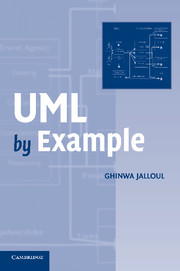2 - Bridge: A Systematic Process Model
Published online by Cambridge University Press: 05 June 2012
Summary
This chapter introduces the general process model on which the developed case studies were based. It commences with an overview of software development phases and general process models as a preamble to introducing the bridge process model based on which the case studies in the forthcoming chapters were developed.
AN OVERVIEW OF PROCESS MODELS
Several process models were discussed and developed to provide a set of activities that permits the development of software systems from user requirements. Almost all processes follow the development of software through the following phases: analysis, design, and implementation, in addition to system testing.
Analysis is the phase during which user requirements are determined and requirement specifications are documented. User requirements are typically collected in a language that is familiar to the user, where a user in this context could mean a real user, the company, or a vendor that requests the software to be developed to automate certain services. The requirements describe what the system is requested to deliver as automated services. Requirements are documented in a specification language that is understood by the designers and developers and that steps away from the user, creating, more or less, a gap between the language and requirements expressed by the user and language and tools applied by analysts, designers, and implementers. The output of this phase is a requirement specification document.
The design phase follows analysis. During design a system designer relies on system specifications reached during the analysis phase to lay out the design of the system.
- Type
- Chapter
- Information
- UML by Example , pp. 48 - 80Publisher: Cambridge University PressPrint publication year: 2004

